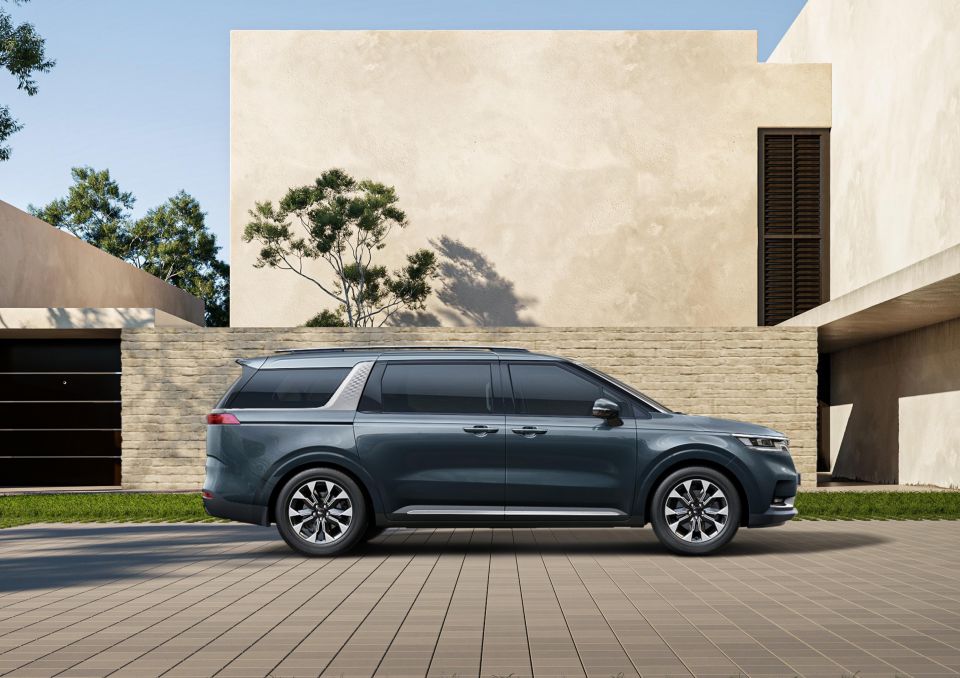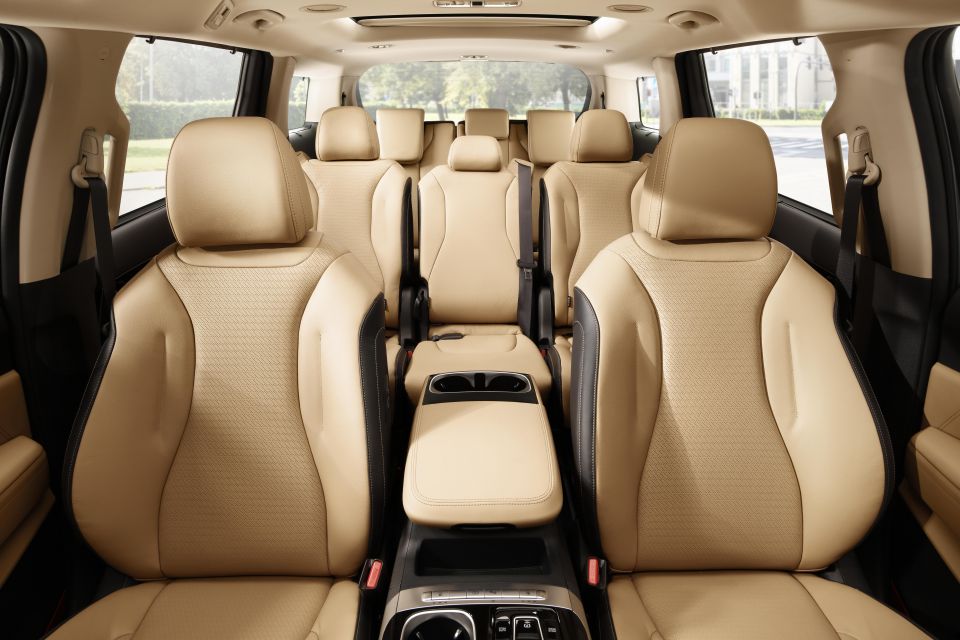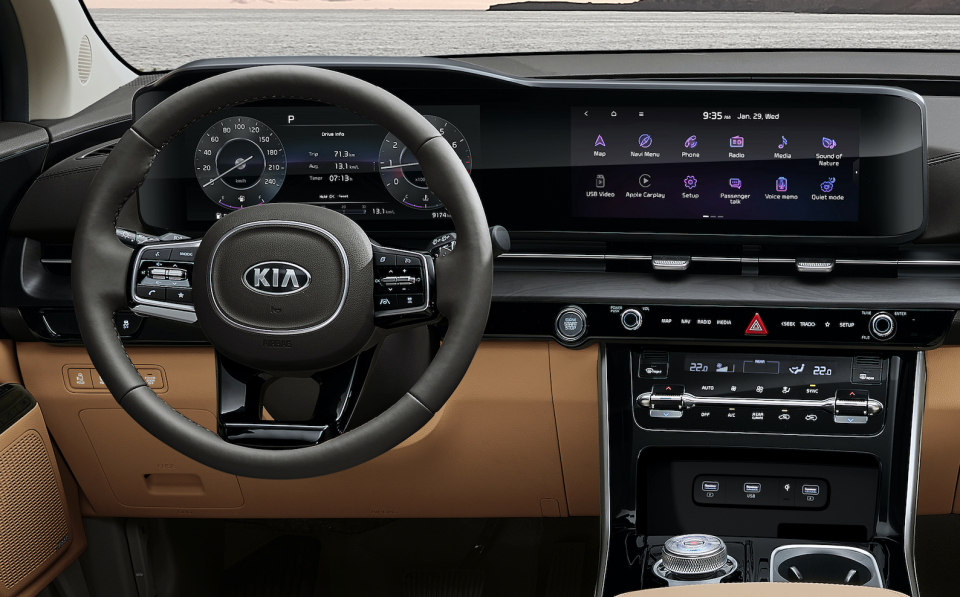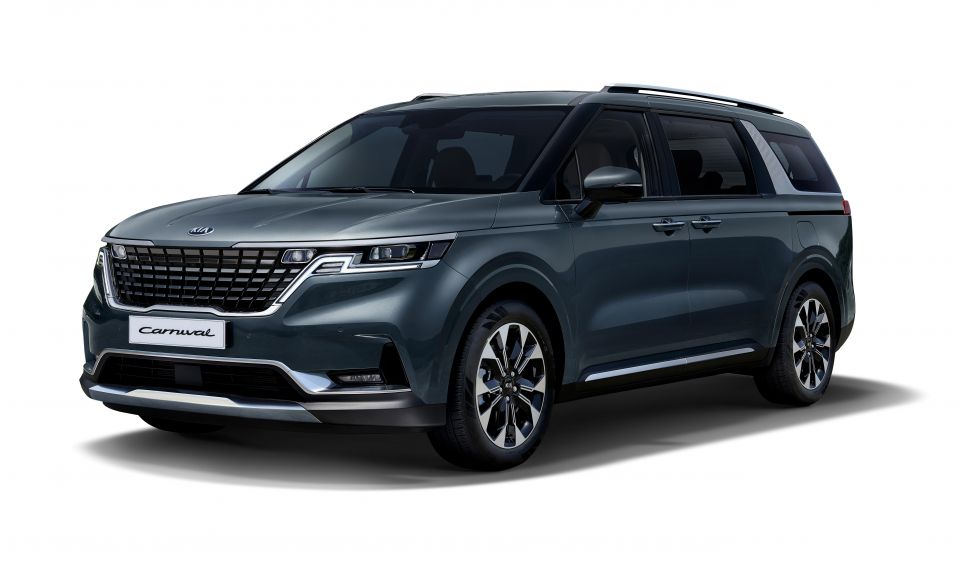

Josh Nevett
2025 Bentley Bentayga review
5 Days Ago

Senior Contributor
The new, fourth-generation Kia Carnival was unveiled back in June, but the company has furnished us with more details ahead of its Australian launch by the end of 2020.
It sits on a new platform and shares numerous mechanical bits with the also-new Sorento SUV that’s on sale from September.
Kia calls this new Carnival roomier, safer and higher-quality than the outgoing model, and spruiks its “SUV-inspired design”.
The new Carnival certainly has big shoes to fill. The current, soon-to-be-replaced model hit our shores at the end of 2014, and since then Kia has moved a tick under 30,000 of them, equivalent to almost 50 per cent market share among all people movers.
Kia says the new model has a shorter front overhang than the outgoing model, while the A-pillar’s base has been moved rearwards. The grille is bolder, the side pillars are blacked-out to make the roof “float”, and the rear lights run the width of the tailgate.


The 3090mm wheelbase is 30mm longer than before, while the body is 10mm wider (1995mm), and 40mm longer (5155mm) overall, most of which is behind the rear axle to improve cargo space.
Globally you can have the Carnival in seven-, eight, or 11-seat configurations, but we strongly suspect the latter setup will not make it to Australia. The outgoing model is sold exclusively here with eight seats.
In new seven-seater models you get adjustable back-, arm- and leg-rests providing ‘business class’ seating, which we speculate could come to Australia in flagship variant(s). One of the supplied images also shows a configuration where the middle row of seats faces rearward, in a manner reminiscent of a luxury train booth.
The new model is claimed to offer a whopping 627 litres of cargo space (VDA, not SAE) behind the third row of seats, meaning there’s room for eight and their luggage. You can fold the rear two seat rows flat to turn the Carnival into a carpet-lined van with 2905L. Kia also says the boot lip is 26mm lower than before.


The new cabin looks somewhat different to the Sorento’s, with a clear goal of offering some differentiation. The highlight is the pair of 12.3-inch screens serving as the driver’s instruments and centre touchscreen, which are housed under a single seamless glass piece.
“This dual-screen display creates a panoramic, widescreen user experience, with many infotainment functions controlled via touch-sensitive buttons around the screen. There is a similar haptic control panel further down the centre console for climate control,” Kia says.
Features include sat-nav with live traffic updates, plus wireless Apple CarPlay and Android Auto. The infotainment system also lets users connect two smartphones via Bluetooth at the same time, so one can be used for calls and other streaming audio.
Kia also mentions a new ‘Rear Passenger View & Talk’ feature that uses a small camera to film rear seat occupants and project them onto the centre screen. Good for checking on the rowdy kids… The system also amplifies conversation between the seat rows.

Should front occupants opt in, a ‘Rear Passenger Voice Recognition’ system lets people in the second row give voice commands to the infotainment system.
There’s a one-button open-and-close function for the rear power-sliding doors and tailgate. Both can also be opened and closed automatically from the key fob.
Active safety systems available depending on spec include AEB that detects pedestrians and cycles, lane-keeping aid, blind-spot monitoring and side-collision avoidance assist, speed-limit assist linked to the traffic-sign recognition camera, active navigation-based cruise control, a 360-degree camera, a Level 2 Highway Driving Assist, and Safe Exit Assist that stops the back sliding doors opening if a car is approaching from either side.
In terms of dynamics, the new platform houses “dramatically altered” independent suspension at both axles, comprising different cross members, rubber bushes with liquid inside, and new spring and shock angles. There’s a new column-mounted electrically-assisted steering system that’s quicker off centre.

“The development of the new model has focused on delivering an easy-going, comfortable and assured ride, with stable handling in all conditions,” Kia says.
There’s also a “comprehensive array of sound-deadening and insulating measures that ensure the new model is one of the quietest and most refined on the road,” Kia added. These include more wheel-arch insulation, a full underbody cover, and denser firewall insulation.
There are three engines globally: a 3.5-litre direct-injected V6 petrol with 216kW/355Nm, a 3.5-litre multi-point injected V6 petrol with 200kW/332Nm, and an updated 2.2-litre diesel with 148kW and 440Nm. The current Carnival has a 3.3-litre V6 and 2.2-litre diesel. All are mated to an eight-speed automatic sending torque to the front whees.
There’s no mention of electrification, yet, either 48V or hybrid.
Where expert car reviews meet expert car buying – CarExpert gives you trusted advice, personalised service and real savings on your next new car.


Josh Nevett
5 Days Ago


Andrew Maclean
5 Days Ago


Shane O'Donoghue
4 Days Ago


Anthony Crawford
3 Days Ago


Matt Campbell
2 Days Ago


James Wong
1 Day Ago